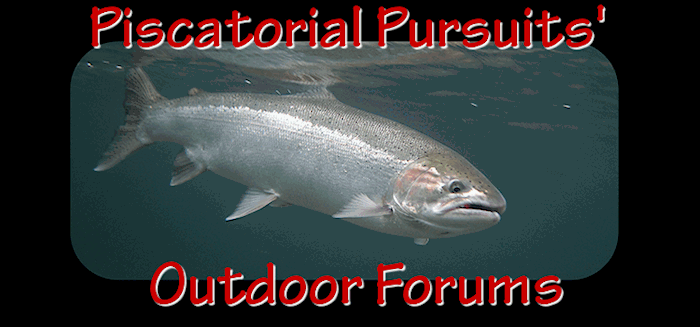Smalma
Thanks for the response to my questions. I do think that it would be useful to know the sex ratio of the resident rainbows in different rivers. The John McMillan article that Double Haul posted a link to has some info about the ratios in the Sol Duc and Calawah. That paper views the Sol Duc and Calawah as having a relatively healthy wild steelhead population. It would be interesting to have a comparsion study in a system with a poor wild steelhead population. It is interesting that you point out that broodstock programs should have some resident rainbow input. I did come across a paper related to Kamchatka steelhead that stated any recovery program that did not involve resident rainbow was poorly designed.
I am interested in the early marine mortality of all smolts, the physiological transformation from freshwater to saltwater is a key life history stage. Unhealthy smolts, small size, impaired swimming speed, and other problems increase the probability of mortality. The birds and seals are probably improving the chances of the healthy smolts by getting rid of unhealthy fish that would compete with them only to die later.
I did check out the report. One of the advantages of being a retired UW staff is that you have access to the UW libraries online services which includes free downloads of journal articles. It was a bit of detective work to find the article though, the citation was the wrong journal. I checked the NMFS Northwest Science Center publications site and it was the same as your post but there is no issue 139 of the Canadian Journal of Fisheries and Aquatic Sciences. A bit of google searching turned up the correct journal, posted below.
Moore, M.E., B.A. Berejikian, and E.P.Tezak. 2009. Early marine survival and behavior of steelhead trout (Oncorhynchus mykiss) smolts through Hood Canal and the Strait of Juan de Fuca.. Trans. Am. Fish. Soc. 139:49-61
I found it interesting that many of the steelhead smolts had an extended residency in Hood Canal, that they migrated to the bridge in a few days then turned around and went south and hung around for some time. The mortality in Hood Canal was not so high, the majority of the mortality was between the bridge and the Juan de Fuca detector array. There is some question of the ability of the arrays to detect steelhead because of the migration routes, in the center of the straits and possibly out of range. Fish that are not detected are enumerated as a mortality. While ocean conditions are commonly viewed as the major determinant of smolt to adult returns I think the health of the smolts leaving the river is of equal importance.
I do think it is important to sort out the questions of plasticity, phenotype, genotype and the relationships of populations within rivers and populations in different river systems. How local environmental conditions and how more regional environmental conditions interact to influence population structure. The paper below is an interesting look at the Dean River wild steelhead population structure. It is particularly interesting because sport fishermen participated in the sampling. It was referenced in the John McMillan article, I was surprised to see I have coffee every morning with one of the co-authors so I can't be too critical. The abstract is available online but the paper requires a subscription or a trip to the library.
Hendry, MA, JK Wenburg, KW Myers, AP Hendry. 2002 Genetic and phenotypic variation through the migratory season provides evidence for multiple populations of wild steelhead in the Dean River, British Columbia. Trans. Am. Fish. Soc. 131:418-434.













 Previous Topic
Previous Topic Index
Index

